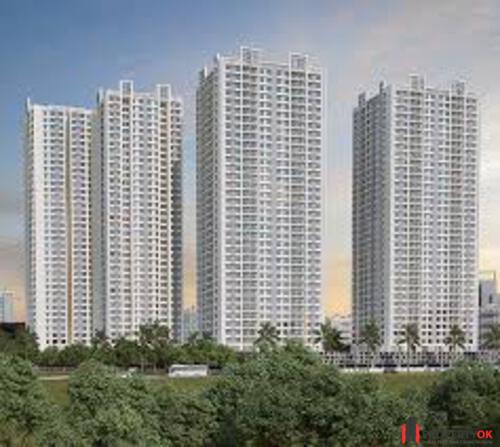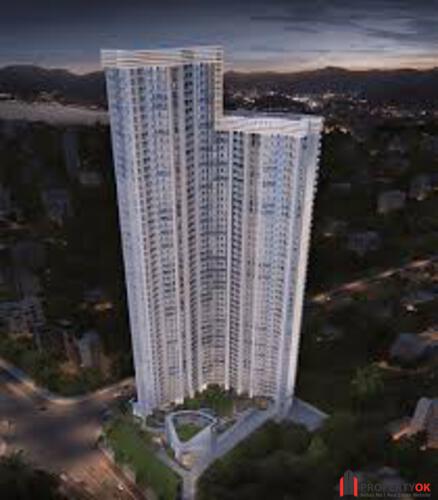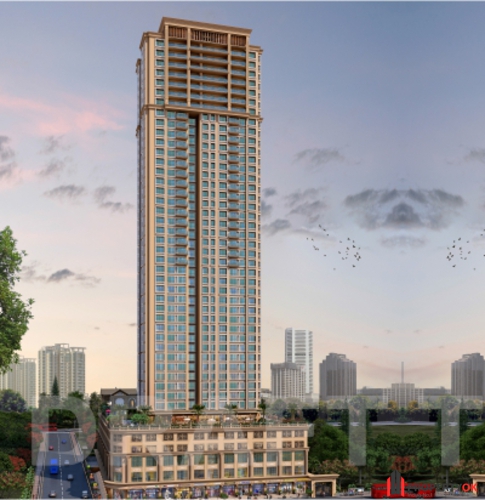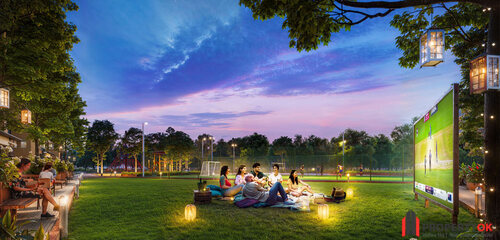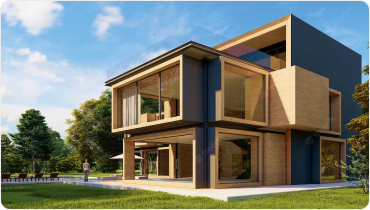Introduction
Are you in the market for a new office or home? Before you make any hasty decisions, it’s important to know which types of buildings could end up being a nightmare. From dilapidated structures to faulty foundation work, these five types of buildings should be avoided at all costs if you want to avoid costly repairs and potential safety hazards down the road.
Keep reading to learn more about what red flags to watch out for!
Don’t miss out on exclusive offers! Click below to sign up for alerts on new properties.

How to say if a building is structurally sound
If you’re considering purchasing a building, it’s important to ensure it is structurally sound. Here are some tell-tale signs that a building is not structurally sound:
1. cracks in the foundation or walls
2. sagging or uneven floors
3. doors or windows that don’t close properly
4. gaps between the wall and ceiling
5. water damage
Types of Building Structures
There are three main types of building structures: load-bearing, frame, and shell. Load-bearing structures are the most common type of building structure. Frame structures are less common, but they’re more popular in residential construction. Shell structures are the least common type of building structure.
Load-bearing structures are built with walls that bear the weight of the roof and the floors above. The weight of the roof and floors is transferred to the foundation through the walls. Framed structures have walls that don’t bear any weight – the weight is carried by horizontal beams and vertical columns. The frame transfers the weight to the foundation. Shell structures have no internal support system – the shell itself supports the weight of the roof and floors.
All three types of building structures have their benefits and drawbacks. Load-bearing structures are strong and durable but also expensive to build. Frame structures are less expensive to build, but they’re not as strong or durable as load-bearing structures. Shell structures are the least expensive to build, but they’re also the weakest type of building structure.
Explore this blog for more insights:
HOUSE VS. FLAT: WHICH IS THE BETTER HOUSING OPTION FOR YOU?
The 5 Types of Buildings to Avoid
The 5 Types of Buildings to Avoid:
1. High-Rise Apartments: Unless you’re looking for a skyline view or want to live in a very urban area, high-rise apartments are generally not worth the money. They’re often more expensive than lower-rise buildings and can be noisy and difficult to escape in an emergency.
2. Office Buildings: Unless you work from home, an office building is probably not the best place to live. They tend to be noisy, have long hours, and can be difficult to access after hours.
3. Retail Stores: While some retail stores may have apartments above them, it’s generally not a good idea to live in a retail store. They tend to be open late and can be noisy and bright at night.
4. Industrial Buildings: Industrial buildings are often large and loud, making them poor choices for living quarters. In addition, they may have hazardous materials on site that could pose a health risk.
5. Hospitals: Hospitals are typically not ideal places to live for several reasons. They can be noisy, have odd hours, and may have sick people coming and going at all hours of the day and night.
Types of Residential Buildings
There are many types of residential buildings, but not all are created equal. Some are better than others, and some should be avoided. Here are the different types of residential buildings:
1. Single-family homes: These are the most common type of residential buildings, and they can be either detached or attached. They’re usually the best option for families, as they offer more privacy and space than other residences. However, they can also be more expensive to maintain and heat/cool.
2. Multi-family homes: These include apartments, condos, townhomes, and duplexes. They’re a great option for people who want to live in a close-knit community and don’t mind sharing walls with neighbors. They’re usually more affordable than single-family homes, but they can be noisier and have less privacy.
3. Manufactured homes: These are mobile homes or trailers. They’re typically much cheaper than other types of residences, but they’re also less stable and often located in less desirable areas.
4. Senior living communities: These are specialized residences for people aged 55+. They often include amenities like on-site medical care, social activities, and housekeeping services. They can be a great option for seniors who want to downsize and don’t mind living with others their age. However, they can also be quite expensive.
Want to stay informed? Follow our blog for valuable information:
DON’T MAKE THESE MISTAKES ON SELLING A HOUSE: THE ESSENTIAL CHECKLIST TO GET IT RIGHT
Types of Commercial Buildings
There are many types of commercial buildings, but not all of them are created equal. Some are just plain old and run-down, while others are brand new and beautiful. But there are also some commercial buildings that you should avoid at all costs.
Here are the three worst types of commercial buildings:
1. The first type of commercial building to avoid is one that is vacant and abandoned. These buildings are often in disrepair and can be dangerous. If you’re looking for new office space, make sure to steer clear of these types of buildings.
2. The second type of commercial building to avoid is one that is poorly maintained. Even if a building is occupied, if it’s not well-maintained, it can be a sign that the owner doesn’t care about their property – which is not something you want in a landlord.
3. The third and final type of commercial building to avoid is one with a lot of turnovers. If a building has had a lot of businesses come and go, it could be a sign that there’s something wrong with the property itself. It’s best to steer clear of these types of buildings as well.
Types of Apartment Buildings
There are many different types of apartment buildings out there, and not all of them are created equal. Some are better than others, while some should be avoided at all costs. Here are the different types of apartment buildings you should know about:
1. Low-quality apartment buildings: These are typically older buildings that have not been well-maintained. They may have structural issues, problems with pests or mold, and other serious concerns. It’s best to avoid these if possible.
2. Luxury apartment buildings: These are newer, high-end buildings that come with all the bells and whistles. They’re usually more expensive than other options, but you’ll get what you pay for in terms of quality and amenities.
3. Mixed-use apartment buildings: These are becoming more popular in urban areas. They typically have ground-level retail space (like shops or restaurants) and residential units above. This can be a great option if you want to live in a busy, vibrant area.
4. Student housing: If you’re a student, special apartment buildings are often designed specifically for students. These usually come with extra amenities like study lounges and on-site laundry facilities.
Looking for expert opinions on living in Mumbai? Check out this blog:
A GUIDE TO LIVING IN MUMBAI, INDIA: THE CAPITAL OF DREAMS
Different Types of Buildings
There are a few different types of buildings you should avoid at all costs. These include:
1. Buildings with a lot of deferred maintenance.
This means that the building owner has been neglecting to do necessary repairs and upkeep. This can lead to many problems down the road, so it’s best to steer clear.
2. Buildings with poor indoor air quality.
This is often caused by mold or asbestos in the building, which can be dangerous to your health.
3. Buildings with a high crime rate.
This is self-explanatory – you don’t want to live where you constantly have to worry about your safety.
4. Buildings with noisy neighbors.
If you value peace and quiet, you’ll want to avoid places where people constantly make noise day and night.
5. Buildings with shoddy construction.
This is usually evident from the outside but can also be hidden behind walls or ceilings. Either way, it’s not something you want to deal with as a tenant.
Also Read:
INDIA’S AFFORDABLE HOUSING CRISIS: IS THERE ANY HOPE FOR A SOLUTION?
Conclusion
Knowing which types of buildings to avoid can help you make better decisions when looking for a place to live and work. At the same time, many great places might not fall into any of the 5 categories outlined here, understanding which ones to watch out for can save you a lot of time and stress in the long run.
Keep this list handy so that next time you’re on the hunt for a new home or office space, you’ll have all the information necessary to select one that’s safe and reliable.
Frequently Asked Questions:
1. Which floor type is used for residential buildings in India?
Typically, the floors of residential buildings are made with a combination of concrete and vinyl, laminate, or ceramic tiles. Each of these materials comes with its strengths and weaknesses and should be evaluated based on the building’s location, layout, and usage.
2. What are the different types of buildings that investors should avoid?
Not all buildings were created equal, and some can be more of a hassle to maintain than others. Here are five different types of buildings investors and entrepreneurs should consider avoiding:
1) Structurally Challenged Buildings – If the materials used to build the structure are inferior, this could lead to costly repairs and renovations.
2) Poorly Located Buildings – If a building is in a bad neighborhood or has limited access to transportation, it could hinder its value.
3) Poor Design Buildings – Poor design affects usability, energy efficiency, longevity, and aesthetics.
4) Unsafe Buildings – This can pose physical and legal risks due to hazardous conditions or compliance issues.
5) Outdated Buildings – Old architecture and outdated infrastructure can be expensive to upgrade or renovate to keep up with modern standards. By being aware of these different types of buildings that may lack the potential for success, you can make smarter decisions when investing in commercial real estate properties.
3. How many types of buildings are there that should be avoided?
There are many different types of buildings you should avoid when looking for new properties. From abandoned and neglected buildings to ones with structural issues or hazardous materials inside, you should stay away from five distinct types of buildings to keep your investments safe. These include mold-contaminated buildings, those built on unstable ground, buildings with outdated electrical systems, homes with asbestos, and houses on flood-prone land. Don’t let these five kinds of hazardous buildings deter you from finding great opportunities in the real estate market – just exercise caution so you can make informed decisions about your investment.
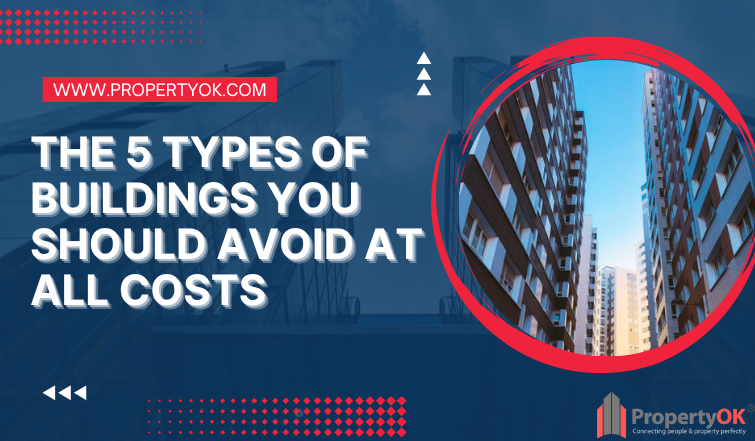
 Thank You
Thank You
